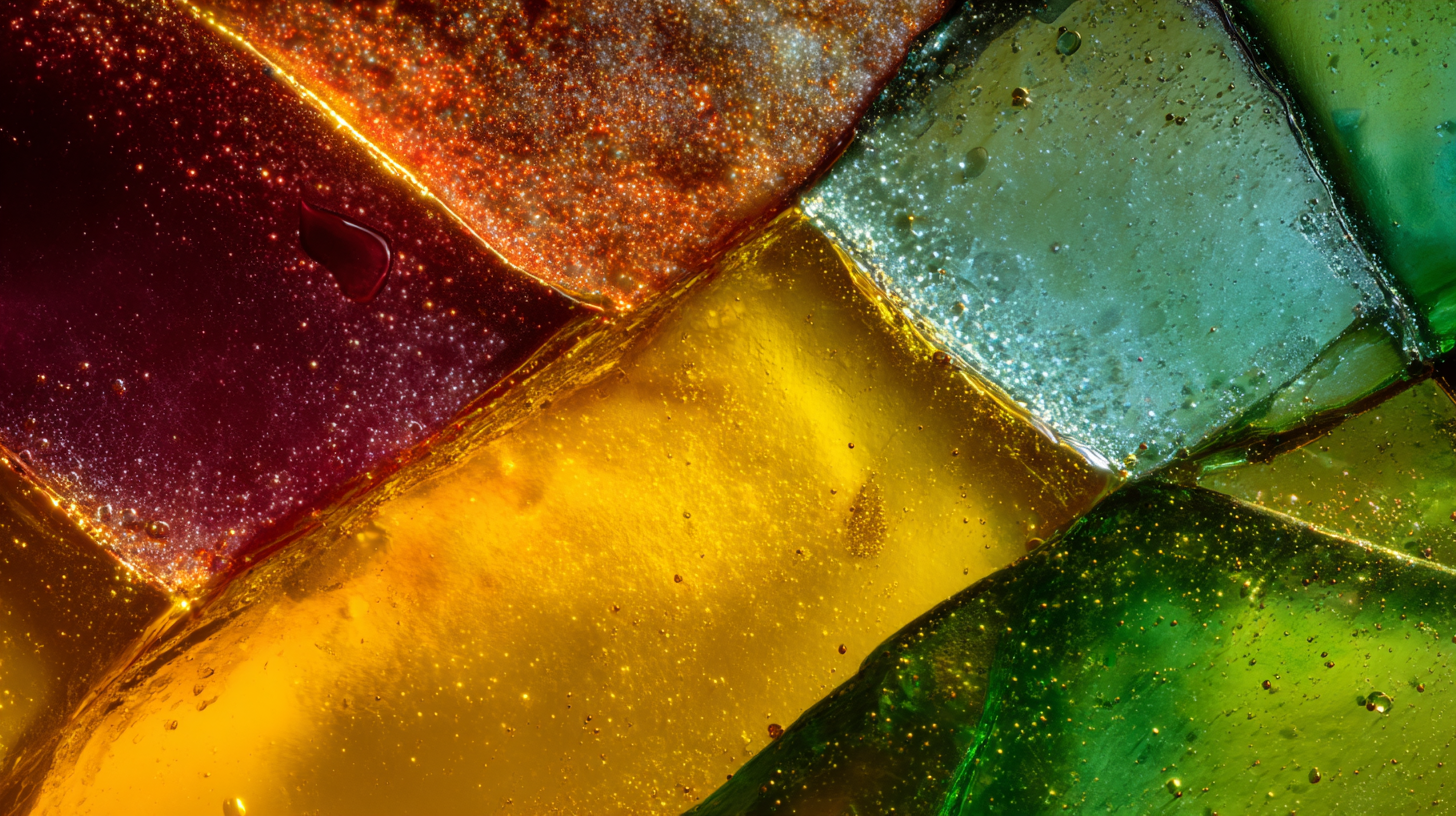
The demand for high-quality touchscreen technology is surging globally, with the market projected to reach $45 billion by 2025, highlighting the need for superior materials such as ITO glass for touch panels. As consumer electronics become ubiquitous, industries from automotive to healthcare increasingly rely on advanced interactive displays, fueling the necessity for reliable and efficient transparent conductive materials. ITO glass for touch panels stands out as a preferred choice due to its exceptional transparency, conductivity, and flexibility, enabling manufacturers to create more responsive and visually appealing devices. According to a recent industry report, the global ITO market is expected to grow at a CAGR of over 7% through the next several years. This increasing demand underscores the importance of selecting the best ITO glass for touch panel needs, ensuring optimal performance while addressing environmental concerns and evolving technological standards.

When selecting the best ITO glass for your touch panel applications, understanding the regulatory landscape related to import and export certifications is crucial. Recent changes by regulatory bodies emphasize the importance of certifications like the ISI mark, which is being mandated for various glass products. This move aims to uphold quality standards and weed out subpar materials entering the market, which often jeopardize safety and performance, especially in critical applications like automotive windscreens and architectural glass.
Furthermore, the growing concerns over imported glass safety are prompting regulators to scrutinize the quality of processing and toughened glass from overseas. The influx of cheaper imports has raised alarms regarding compliance with established safety standards, leading to a potential competitive disadvantage for domestic producers who adhere to stricter guidelines. By ensuring that suppliers can provide valid certifications and demonstrating a commitment to quality, manufacturers can protect themselves against the risks associated with low-quality imports and make informed decisions on sourcing ITO glass for touch panels.
When selecting ITO glass for touch panel applications, several key factors must be considered to ensure optimal performance and longevity. One of the primary considerations is the sheet resistance of the ITO glass. Reports indicate that ITO glasses with a lower sheet resistance, typically around 10–20 ohms per square, provide better conductivity, enhancing touch sensitivity and responsiveness. This is particularly crucial for applications where precision and quick response times are required.
Another significant factor is the optical clarity of the ITO glass. High-quality ITO glass should exhibit at least 90% transmittance in the visible spectrum, ensuring that the display's brightness and color accuracy are not compromised. Data from industry studies suggest that ITO glass with superior optical properties contributes to a better user experience, especially in high-definition applications.
Tip: Always request samples and conduct tests to ascertain the performance of different ITO glass types before making a bulk purchase. Additionally, consider the thickness of the ITO layer; a balance between transparency and durability is essential for many applications. Another important tip is to assess the compatibility of the ITO glass with your existing manufacturing processes to avoid costly adjustments or delays.

When selecting the best Indium Tin Oxide (ITO) glass for touch panel applications, understanding the various types and their respective pros and cons is essential. ITO glass is a crucial component in touch screens, offering transparency and conductivity. According to the latest 2022 Glass Industry Research Report, ITO glass benefits from the flexibility of silicon dioxide’s structure, which allows for efficient interaction with touch technology.

Two prominent types of ITO glass are low-emissivity (Low-E) and high-performance ITO glass. Low-E ITO glass is valued for its energy efficiency and enhanced optical properties. However, while it offers good conductivity, it may not be as suitable for high-transmittance applications. On the other hand, high-performance ITO glass stands out for its exceptional conductivity and transparency, making it ideal for devices requiring rapid response times. However, the manufacturing costs can be higher, which may impact budget considerations.
Ultimately, evaluating the specific requirements of your touch panel application, such as durability, optical clarity, and cost-efficiency, is vital. Each type of ITO glass presents unique advantages and drawbacks, demanding careful consideration to ensure the selection aligns with your project goals.
When sourcing ITO (Indium Tin Oxide) glass for your touch panel applications, it's crucial to partner with trusted suppliers. Begin by validating the supplier's credibility. Look for industry certifications and customer reviews that affirm their reliability and product quality. Established suppliers often have a proven track record of delivering high-performance ITO glass, which is essential for the functionality and longevity of your touch panels. Don’t hesitate to engage directly with suppliers to inquire about their production processes and quality control measures.
In addition to assessing supplier credibility, consider their ability to meet specific technical requirements. ITO glass comes in various thicknesses and resistivities, tailored for different applications. Ensure the supplier can provide customized solutions to align with your project needs. Furthermore, evaluate their capability for consistent supply and responsiveness to your orders. A supplier who can adapt to changing demands and provide support throughout the procurement process can greatly enhance your project's efficiency and success. Prioritizing these best practices will help you source the right ITO glass, ensuring optimal performance for your touch panel applications.
When selecting Ito glass for touch panel applications, evaluating performance characteristics is crucial to ensure optimal functionality and longevity. Key parameters to consider include transparency, conductivity, and durability. According to a recent market research report by IDTechEx, the use of ITO (Indium Tin Oxide) glass in touchscreen applications is projected to reach $5 billion by 2025, underscoring the importance of high-quality materials that meet increasing industry demands.
When assessing transparency, look for tactility along with optical clarity. The ideal Ito glass should have over 90% light transmittance to ensure crisp visuals. Conductivity is equally essential; higher sheet resistance can lead to slower touch response times. Industry experts recommend choosing Ito glass with a sheet resistance of less than 20 ohms per square for optimal performance.
**Tip:** Always conduct a comparative analysis of various suppliers to ascertain the best value for your investment. **Tip:** Request samples to test the touch sensitivity and clarity before making a bulk purchase. This hands-on approach will help you better evaluate how well a specific glass meets your project’s unique requirements.
| Feature | Description | Importance | Ideal Value Range |
|---|---|---|---|
| Transparency | Percentage of light passing through the glass | High - Ensures clear display visibility | 90% - 95% |
| Surface Resistance | Resistance to electrostatic discharge | Moderate - Prevents static buildup | 100 - 1000 ohms/sq |
| Durability | Resistance to scratches and damage | High - Enhances longevity | No visible damage after 1000 scratches |
| Thermal Stability | Ability to withstand temperature fluctuations | High - Prevents warping and cracking | -40°C to +85°C |
| Thickness | Measured thickness of the glass | Moderate - Affects weight and flexibility | 0.5mm - 3mm |